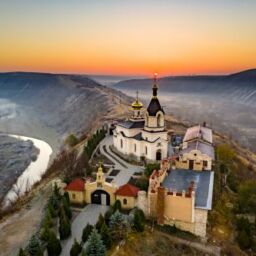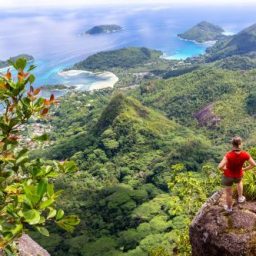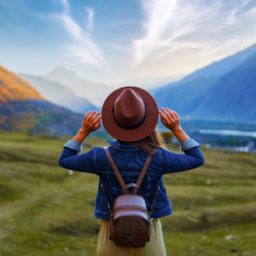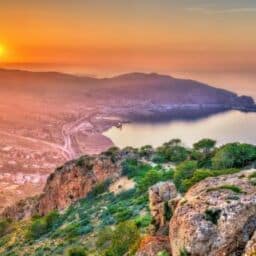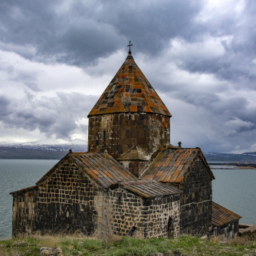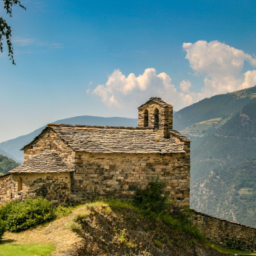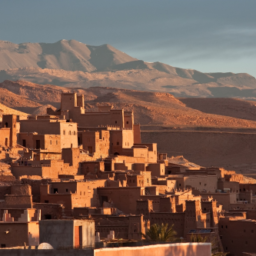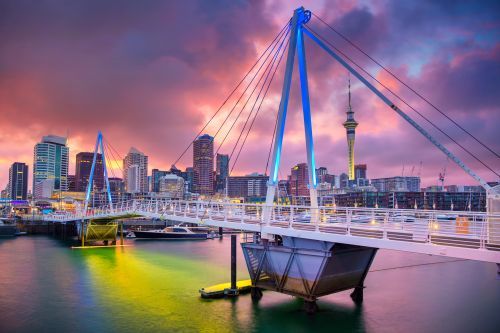

Have you ever wondered what New Zealand has to offer? This beautiful island lies at the very end of the world, but that doesn’t stop it from delighting tourists from all corners of the Earth. During your visit to New Zealand, you can admire the beautiful landscapes, taste the local cuisine and learn about the Māori culture. Local wines, fascinating nature, and many outdoor adventures await you. It is an ideal holiday destination for nature lovers and those looking for unforgettable experiences.
What else is there to know, what is the language of New Zealand, and what can it offer besides wonderful landscapes? Find out everything in the text below!
Contents
New Zealand – key information
Here are some interesting facts about New Zealand:
- The capital of the country is Wellington, but the largest city is Auckland.
- It is known for its beautiful landscapes, including active volcanoes, mountain peaks, beautiful beaches, and green valleys.
- The country is one of the most biodiverse in the world, with many animal and plant species found only in New Zealand.
- Many film productions, including the Lord of the Rings trilogy, were shot in the country because of its beautiful scenery.
- Māori culture is an important part of New Zealand’s cultural heritage and has influenced many aspects of life, including language, art, music, and social customs.
- It is a democratic country with a stable economy based on tourism, agriculture, fishing, and exports of wood products and meat.
- It is famous for its advanced environmental policy and environmental protection activities, including ambitious targets for reducing greenhouse gas emissions.
Geography of New Zealand
New Zealand is a country located in the South West Pacific, consisting of two main islands (North and South) and numerous smaller islands. It is the southernmost part of Oceania. The surface of the islands is very diverse, making the country known for its beautiful landscapes, including high mountains, picturesque sandy beaches, national parks, and geothermal springs. The climate in the country is temperate, characterized by warm summers and cool winters. There are also unique plant and animal species such as kiwi and tuatara. Due to its location, New Zealand is prone to earthquakes and volcanic eruptions.
In the north, in the central part of the island, there are many active volcanoes. The highest peak is the volcano Mount Ruapehu (2797 meters). New Zealand’s largest city, Auckland, is also located in the North Island.
The South Island is home to the Southern Alps, which are the highest mountain range in the islands. The highest peak in New Zealand is Mount Cook (3724 meters). The southern part of the country is also famous for its beautiful fjords, such as Milford Sound.
There are many national parks in New Zealand that protect the country’s unique wildlife, including Tongariro National Park, Fiordland National Park, and Abel Tasman National Park.
Due to the location, the seasons in the country are opposite to those in Europe. The summer months are December, January, and February and the winter months are June, July, and August.
Political system
New Zealand is a democratic country that is a constitutional monarchy. This means that formally the British king, currently Charles III, is the head of state, and the Governor-General acts on his behalf. The country is also part of the Commonwealth of Nations, which includes numerous countries of the former British Empire.
However, in practice, executive power is exercised by the government, which a prime minister leads. He is elected by the members of Parliament, which consists of two houses – the House of Representatives (lower house) and the House of Lords (upper house).
The House of Representatives is chosen in general elections for three years term. The number of seats in the House of Representatives depends on the population of each constituency, and the House of Lords is composed mainly of senators appointed by the Governor-General on the proposal of the government.
New Zealand’s political system is known for successfully combining features of parliamentary and presidential systems, as well as a strong party system.
Administrative division
New Zealand is divided into 16 regions, which consist of 11 regions in the North Island and 5 regions in the South Island, and the unitary authority of the Chatham Islands. These regions are split further into districts, cities, and municipalities.
The regions in the North Island are:
- Northland
- Auckland
- Waikato
- Bay of Plenty
- Gisborne
- Hawke’s Bay
- Taranaki
- Manawatu-Whanganui
- Wellington
- Tasman
- Marlborough
The regions in the South Island are:
- West Coast
- Canterbury
- Otago
- Southland
- Nelson
New Zealand also includes three islands in the Oceania region: Tokelau, Niue, and Cook Islands. All of these territories are linked to New Zealand through an association agreement and have their own governments, the latter two having the status of separate associated countries. The Ross Dependency, a region of Antarctica, is also considered to be a part of New Zealand.
In addition, each region has its own regional government as well as a regional council that deals with various aspects of administration, such as spatial planning, environmental protection, and public transport.
Economy
New Zealand has a diverse and well-developed economy based on a free market and export model of development, for which international trade plays an important role.
The largest sector of the economy is the service sector, accounting for about 65% of GDP. Within this sector, the most important are financial, insurance, tourist, and commercial services.
The second-largest sector of the New Zealand economy is the agricultural sector, accounting for about 7% of the country’s GDP. New Zealand is known for its meat production, particularly sheep and cattle farming. It also exports many other products such as butter, cheese, honey, wine, and fruit.
Other important sectors are: the timber industry, the production of oil and natural gas, the production of metal products, and the engineering industry.
New Zealand is also one of the leading wine producers in the world and one of the leading producers of fruit and vegetables, especially kiwis and apples.
Brief history of the country
The history of New Zealand dates back to about 1,000 years ago, when Polynesians came to the islands and formed Māori societies. In 1642, the Dutch explorer Abel Tasman discovered New Zealand, but European contact with the Māori was sparse until 1769, when British explorer James Cook landed on the North Island.
After years of conflict between British colonizers and indigenous people, the Treaty of Waitangi was signed in 1840-1841, which established British control over the territory and is considered the document that created New Zealand. Its provisions also guaranteed the Māori rights to keep their lands. As a result of the treaty, the islands became a British colony.
In 1907, New Zealand gained independence in internal affairs and created its own government operating within the British colony, and in 1947 New Zealand became an independent state. Nowadays, relations with the United Kingdom are based on the principles of voluntary cooperation.
During the 20th century, New Zealand went through many political and social changes, including the economic system, culture, and struggles for civil rights. In recent decades, New Zealand has achieved a high level of development and prosperity, becoming one of the most democratic, free, and equal countries in the world.
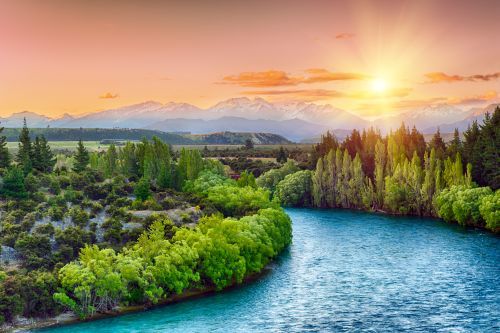
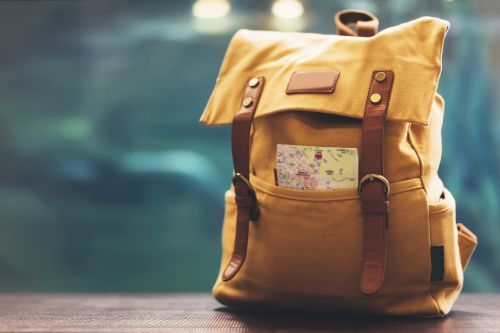
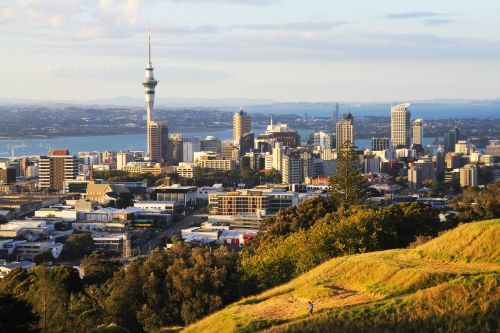
Languages of New Zealand
The official language of New Zealand is English, which is the dominant language used in public communication, business, and education.
The second official language is the Māori language, which is of great cultural and historical importance to the country. The Māori make up approximately 15% of New Zealand’s population and there has been an increase in interest in their culture, traditions, and language in recent years.
In addition to the official languages, numerous languages of immigrant ethnic communities are used on a daily basis, including Chinese, Hindi, Korean, Polish, German, and many others. However, most people still speak mainly English. English and Māori are mainly taught in schools.
New Zealand variant of English
The variant of English used in New Zealand, commonly known as “kiwi English”, is slightly different from the British and American varieties, but at the same time has many features in common with them.
In New Zealand, as in other English-speaking countries, there are many regional differences in pronunciation, vocabulary, and grammar. For example, parts of New Zealand, such as Southland, have a distinctive accent where consonants are pronounced very clearly and vowels are shortened and distorted.
At the same time, many elements of New Zealand English are close to British English, as New Zealand was a British colony for many years. Examples include the use of words such as ‘biscuit’ (instead of ‘cookie’ used in North America) or ‘flat’ (instead of ‘apartment’).
In general, New Zealand English is easy to understand for speakers of other variants of English, but it has its own unique characteristics that make it different from others.
Distinct New Zealand English phrases
Just like any other variety of English, the New Zealand dialect also abounds in its own characteristic phrases, the meaning of which may prove puzzling to people not yet familiar with it. Here are some such examples:
- Kia ora – ‘hello’, this is a Māori greeting but is commonly used by people of all backgrounds.
- Sweet as – ‘super’ or ‘fine’, a common phrase that means that everything is fine or that something is great.
- Chur – ‘well done’ or ‘thanks’, colloquial thanks or praise.
- Jandals – ‘flip-flops’, short for ‘Japanese sandals’
- Tiki tour – ‘ride back’, this means a ride to see the area or a trip that ends up returning to where it started.
- Bach – ‘summer house’, a bach is a popular type of holiday home on a lake or coast in New Zealand.
- Puku – ‘belly’, a Māori word that spread among the rest of the island’s inhabitants.
- Chilly bin – ‘travel fridge’
- Choice – ‘good’, ‘great’, or ‘nice’, a common phrase that means something is fine or something is great.
- Munted – ‘destroyed’ or ‘damaged’, a word used to describe something that is in poor condition, destroyed, or damaged.
- Togs – ‘swimming trunks’ or ‘swimming suit’
- Knackered – ‘tired’ or ‘exhausted’
- Tramping – ‘hiking’
- Box of birds – ‘good’ or ‘great’, a common phrase that means that everything is going well or that something is great.
- Pissed – ‘drunk’ or ‘intoxicated’
- Wop-wops – ‘a sunken village’ or ‘remote area’, a colloquial term for places that are far from major cities or centres of civilization.
These phrases and words are only a small part of New Zealand’s rich vocabulary, but they show how the English language has changed and developed on the island over the last few decades.
Māori Language
The Māori language is important in the context of New Zealand and Māori minorities. They use it not only as a cultural and ceremonial language but also for everyday communication. As the second official language in the country, it is also very much present in the public space. For example, street names are written in both English and Māori, and the second official name of the country is Aotearoa, which means the Land of the Long White Cloud in the Māori language.
It is a complex language with various dialects, and its pronunciation and grammar are quite different from English. The Māori language uses a complex system of prefixes and suffixes that allows many different words and expressions to be formed.
The number of fluent Māori speakers has declined significantly in recent decades due to the process of colonization and the introduction of English as the dominant language. According to the 2018 census, around 4% of the population (or about 180,000 people) report speaking the Māori language at home.
However, in recent years, there has been a growing interest in the Māori language and its revival. The government has introduced a number of programs and initiatives to protect and promote the Māori language, and numerous schools and universities offer Māori language courses. Many people of Māori descent are also seeking to bring the language back into their families and communities.
What to see in New Zealand? Tourist attractions
New Zealand offers many tourist attractions, and here are a few of the highlights:
- Milford Sound – a fjord in the southwest of the South Island, one of the most beautiful places in New Zealand. There you can admire waterfalls, glaciers, mountains, and wild animals.
- Great South Loop – a popular hiking route in the South Island that includes many attractions such as mountains, lakes, waterfalls, and national parks.
- Wai-O-Tapu – a geothermal volcanic park located near Rotorua on the North Island. It is a place where you can see many geysers, hot springs, and colourful lakes.
- Franz Josef Glacier – a glacier on the South Island, which is one of the most accessible glaciers in the world. There you can take a helicopter tour or a walking tour to admire the beauty of the landscape.
- Abel Tasman National Park – a national park on the northern tip of the South Island that offers beautiful beaches, turquoise waters, and wildlife.
- Waiheke Island – an island off the coast of Auckland in the North Island, which is famous for its vineyards, beaches, and beautiful scenery.
- Queenstown – a city in the Southern Alps that is a popular tourist destination for lovers of sports such as skiing, snowboarding, bungee jumping, and skydiving.
- Waitomo Caves – a system of caves and underground rivers on the North Island, where you can admire the New Zealand fireflies occupying the vaults of the caves.
- Mount Cook – the highest peak in the country, located in the Aoraki/Mount Cook National Park on the South Island.
- Te Papa Tongarewa – a national museum in Wellington that presents the history, culture, and nature of New Zealand.


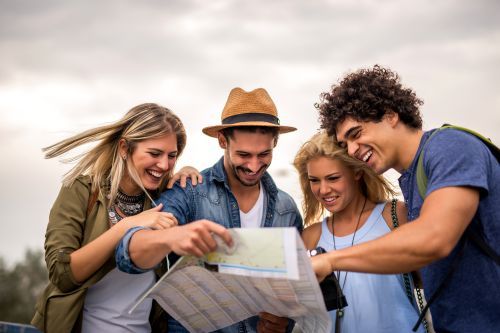
Travelling around the country – useful information for visitors
If you are planning a trip to New Zealand, read the information below. These are some of the most important things to know before travel
General entry requirements
Entry to New Zealand is possible upon the presentation of a valid passport and an appropriate visa (e.g. issued for tourist purposes). Arrivals may also be asked to show a return ticket and to prove that they have sufficient funds to stay in the country (a payment card is usually sufficient).
Local time
New Zealand has three time zones, most of the territory is UTC+12:00 in summer and UTC+13:00 in winter. In Chatham Island, the time is additionally offset by another 45 minutes from the rest of the country (UTC+12:45), and New Zealand’s associated territories only use UTC+13:00, no daylight saving time.
Currency and finances
The official currency is the New Zealand dollar (NZD), which is a separate currency from US or Australian dollars.
Currency can be exchanged at airports, but the exchange there is usually unfavourable and includes additional fees. Banks usually offer better terms.
Card payments are accepted in the vast majority of outlets, but access to ATMs may be difficult outside major cities.
Insurance
Foreigners are not entitled to free health care, but policies offered by international insurance companies are accepted.
Health and vaccinations
As a highly developed country, New Zealand offers high-quality medical care.
Depending on the visitor’s country of origin and travel history, vaccinations against various diseases such as yellow fever, polio, measles, mumps, rubella, typhoid fever, diphtheria, and tetanus may be required.
Public transport
The best way to get to the islands is by plane, sea connections are very limited and only run between the nearby islands and Australia.
Public transport in New Zealand is relatively well-developed in every major city such as Auckland, Wellington, or Christchurch. These cities operate a system of buses, trams, or trolleybuses, as well as trains and the Auckland Metro. In smaller cities, access to public transport is more limited.
Flights are also worth considering, especially between cities in the North and South Islands, as the distances between them are quite extensive.
Driving licence
If you want to rent a car, you must have a valid driving licence issued in the country where you live and an international driving licence or a translation of the driving licence into English. New Zealand drives on the left, which can be a challenge for drivers from countries that drive on the right. However, unlike in the US or UK, speed limits are expressed in kilometres, not miles.
Diplomatic representation
When you are staying in a foreign country, the embassy and consulate are important places to know about. Even though you may not require their assistance, it is advisable to be aware of how to contact them in case of need. Before your trip, take some time to research and locate information about your country’s diplomatic post.
Languages with Skrivianek
Knowledge of English is great, but other languages are also irreplaceable assets, both when travelling and on the labour market. Furthermore, they allow you to establish relationships, both private and business, with people from all around the world. How to learn them? The simplest solution is to join one of Skrivianek’s language courses, carried out either in class or remotely. We also offer translation services in a wide range of language configurations. Check us out!




